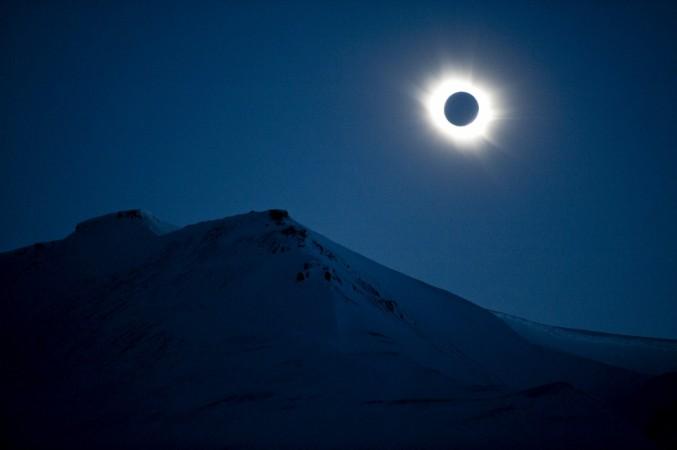
The annual solar eclipse of this year is all set to darken skies on Thursday, i.e. on Sep. 1. On Thursday, sky gazers will witness a beautiful "ring of fire" when the moon will pass in front of the sun.
The annual solar eclipse occurs when the moon comes between the sun and the Earth. In an annual solar eclipse, the moon doesn't completely cover the sun creating a ring of sunlight and thus it is called as "ring of fire."
The solar eclipse will be visible from areas around the southern Indian Ocean on Thursday, but it will be best viewed from southern Africa and northern Madagascar. The eclipse will start at around 9.08 a.m. local time (2.08 a.m. EDT / 11.30 a.m. IST).
Sky gazers are travelling towards Tanzania and also to Réunion, an island east of Madagascar to catch the glimpse of the phenomenal celestial event that will occur on Thursday.
"I think only dedicated amateur astronomers will be travelling like this for the annular eclipse," Jay Pasachoff, an astronomer at Williams College in Massachusetts, told Space.com. "It's fun to do, but it's not as dramatic [as a total eclipse]. But for the total eclipse, then we would like to encourage everybody to travel to try to get into that path of totality."
Where to watch the solar eclipse live?
If you cannot travel to Tanzania or if the solar eclipse is not visible in your country, then you can track the celestial event from NASA's interactive Google map.
Slooh, an online observatory, will also provide the live coverage of the annual solar eclipse. Slooh, which has live streamed several celestial events previously, will give observers a chance to watch the solar eclipse online.
Note for the observers: Do not look directly at the sun during an eclipse with naked eyes, as it might cause serious vision damage.












!['Had denied Housefull franchise as they wanted me to wear a bikini': Tia Bajpai on turning down bold scripts [Exclusive]](https://data1.ibtimes.co.in/en/full/806605/had-denied-housefull-franchise-they-wanted-me-wear-bikini-tia-bajpai-turning-down-bold.png?w=220&h=138)
![Nayanthara and Dhanush ignore each other as they attend wedding amid feud over Nayanthara's Netflix documentary row [Watch]](https://data1.ibtimes.co.in/en/full/806599/nayanthara-dhanush-ignore-each-other-they-attend-wedding-amid-feud-over-nayantharas-netflix.jpg?w=220&h=138)



